How to Make Rejuvelac | Probiotic Drink
Feeling low energy? Rejuvenate yourself with rejuvelac! This vitalizing probiotic drink supports your gut microbiota, which in turn boosts your immune system.
— Permacrafters gets commissions for purchases made through links in this post. We encourage you to prioritize secondhand goods whenever possible. —
Rejuvelac is a lightly fermented drink made from sprouted whole grains. I first heard about it when I was learning about raw foods advocate Dr. Ann Wigmore, who popularized the drink in the 1960s. This probiotic drink can be made with any number of sprouted whole grains, including quinoa, wheat berries, and buckwheat. Whatever grains you chose, your rejuvelac drink will have its own unique strains of beneficial bacteria. The dormant bacteria present on the various grains will be activated through the wild fermentation process and will feed on the sugar present in the grains.
Bacteria cells in our body outnumber our human cells and provide the critical immune support our bodies require. By consuming probiotic drinks, we are promoting balanced microbiota in our gut (making sure the good guys are colonizing our intestines!), boosting our immune system and increasing our energy levels. Probiotic drinks such as rejuvelac have been very popular because of their ability to help with yeast infections and diabetes, but in particular because of their ability to help with a very large number of intestinal problems from constipation to candida, leaky gut syndrome, irritable bowel syndrome, ulcers, celiac, Crohn’s, and diarrhea.
This particular probiotics beverage is made from sprouts, which are the ultimate living food, packed with digestive enzymes, proteins, vitamins & minerals. (Learn more about their health benefits here.) Fermenting these sprouts just takes their health benefits up a notch by adding beneficial live cultures. No wonder it’s touted as a potent rejuvenating beverage!
Here are the materials and steps to make your rejuvelac probiotic drink:
Preparation Time: 10 min
Total Time: 4.5 to 6.5 days (includes sprouting and fermentation time)
Materials & ingredients:
- 1 cup of raw whole grains such as quinoa, brown rice, buckwheat, barley groats, rye, millet, oat groats and/or whole wheat (choose one or several).
- Filtered water
- Quart-size Jar
- Sprouting lids (or cheesecloth)
- Large tea filter (or cheesecloth)
- Any type of breathable cloth
Where can you find these grains?
When it comes to sprouting grains, I would generally recommend getting your grains in the bulk section at your grocery store (even though they sometimes have lower germination rates than packaged grains). For this particular recipe, however, you might want to consider purchasing packaged grains. This is my recommendation only because you will be fermenting them and want to make sure they’ve been stored in conditions where they can’t be contaminated by harmful bacteria. In addition, make sure the grains (like millet and barley) are not hulled. When they are hulled, their embryo is removed and they will not germinate. White rice is hulled, for instance, and therefore won’t germinate.
Steps:
A. Sprouting process:
- Rinse your seeds, but do not wash them. You want to promote the growth of beneficial bacteria present on the grains, so washing them away will defeat the purpose.
- Soak your seeds in your jar overnight for 8-12h in twice the volume of filtered water. Fasten the sprouting lid.
- In the morning, pour off the water.
- Rinse and drain your seeds 2-3 times a day with filtered water for anywhere from 2 to 4 days. Their little tails will appear after a few days.
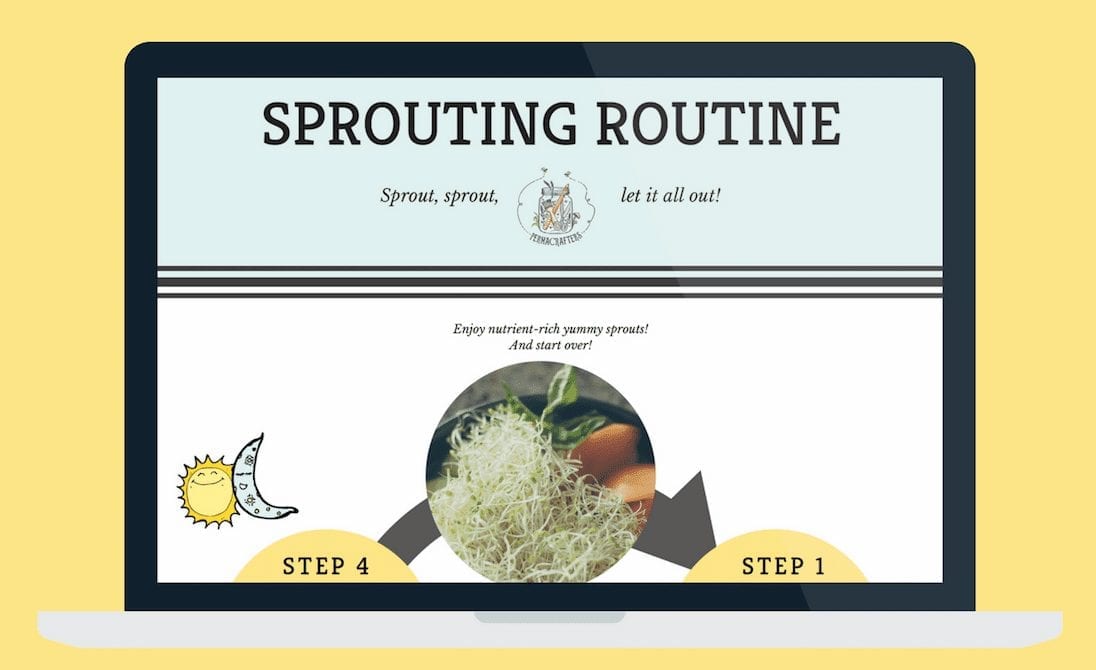
Want to start sprouting now?
Sign up to unlock your printable Sprouting Instructions. Post them on your fridge for easy reference. Happy sprouting!
B. Fermentation process:
- Add about 1 quart of filtered water to your jar. Secure it with a cloth lid.
- Let the grains ferment for 2 days at room temperature.
- Strain the beverage with the cheesecloth. Save the liquid and compost the sprouts.
- Store the rejuvelac in your fridge to slow down the fermentation process. Drink within 5 days.
You’re all set! You can taste your creation. It’s a lemony, earthy, revitalizing tonic: a great beverage to sip on if you’ve just finished a round of antibiotics or if your immune system needs a boost. If the probiotic drink is too strong for your taste, adding lemon juice to it can make it more palatable. For more immune-boosting recipes, check out our turmeric infusion and our homemade elderberry syrup recipe.
Did you drink from the fountain of youth with rejuvelac? Do you prefer it to other probiotic drinks? Let us know in the comments below!
Do you want to learn more about sprouting? Check out our Sprouts & Microgreens Online Workshop by clicking here.
Do you want to learn more about fermentation? If you’re a Triangle or Asheville (NC) local, keep an eye out for classes offered by the talented Marc Williams!
Cheers to a happy gut!
Christelle & Cristina
P.S. Read our post for the Zero Waste Collective on growing sprouts & microgreens if you want to learn more!
Sprouts & Microgreens - Free Trial
Sign up for the FREE sample of the e-course on how grow sprouts and microgreens all throughout the year.

By commenting you accept our Privacy Policy.
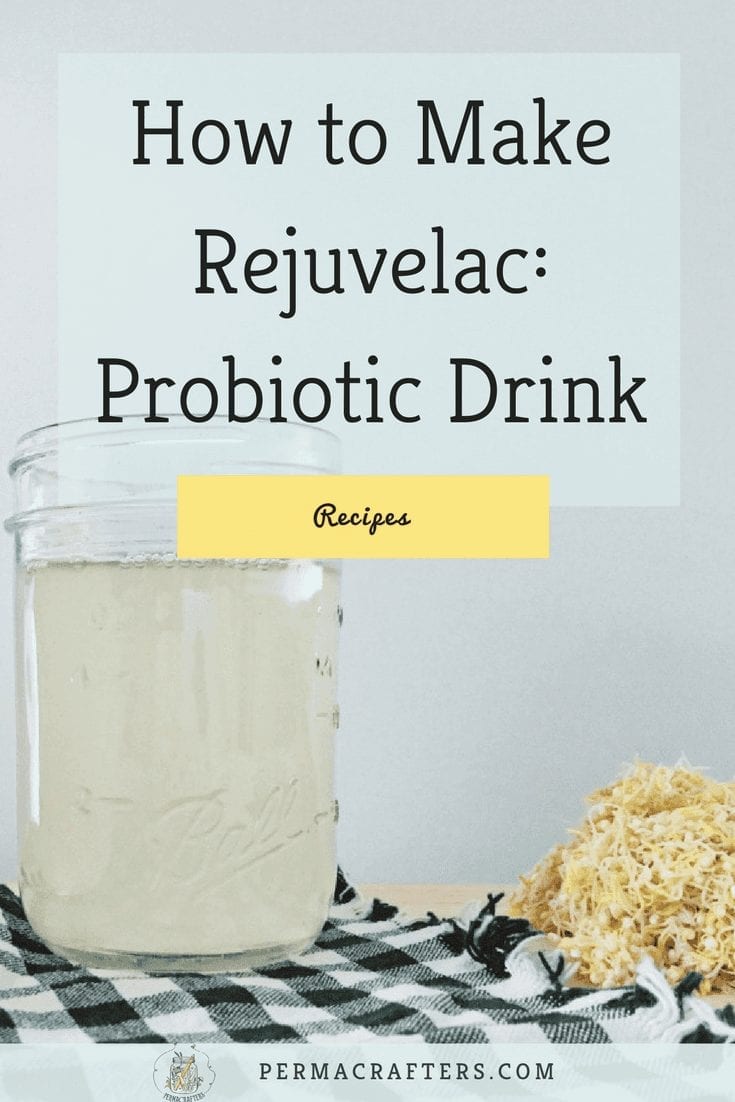
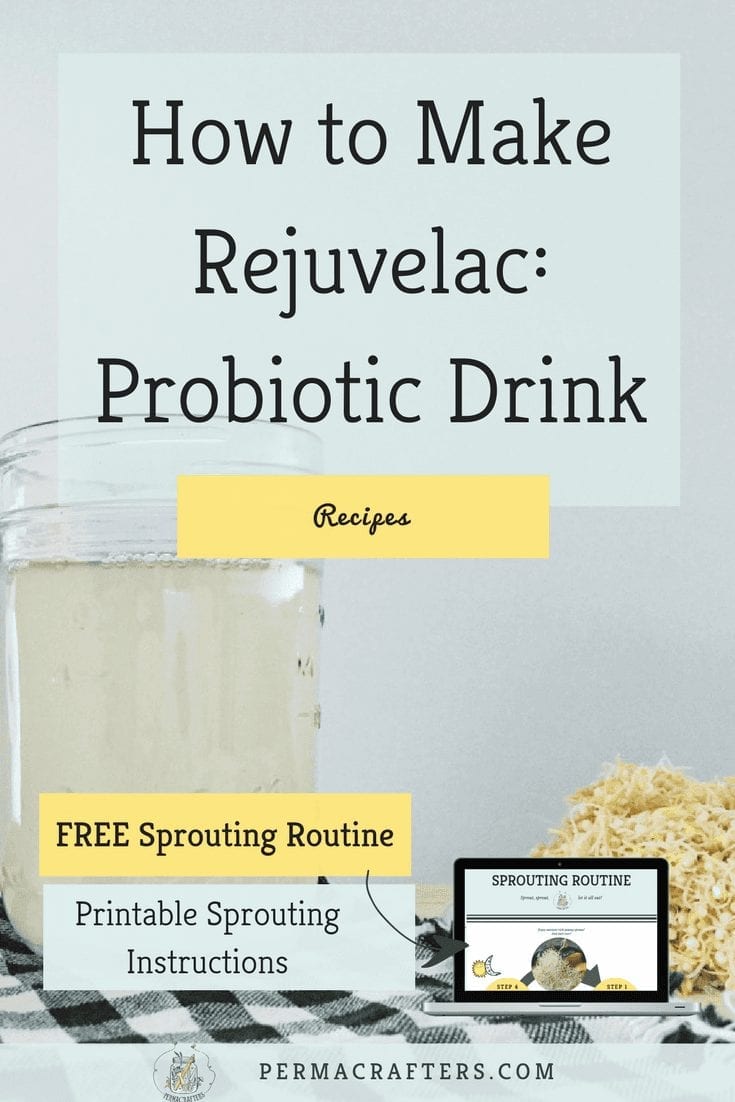
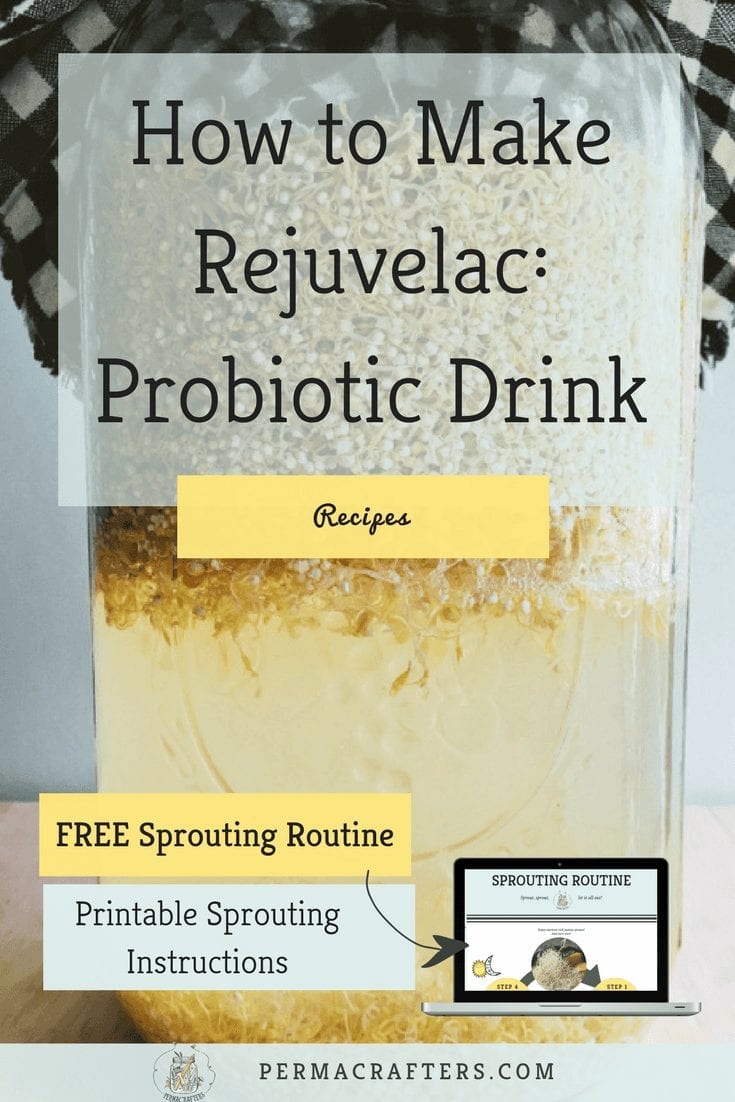
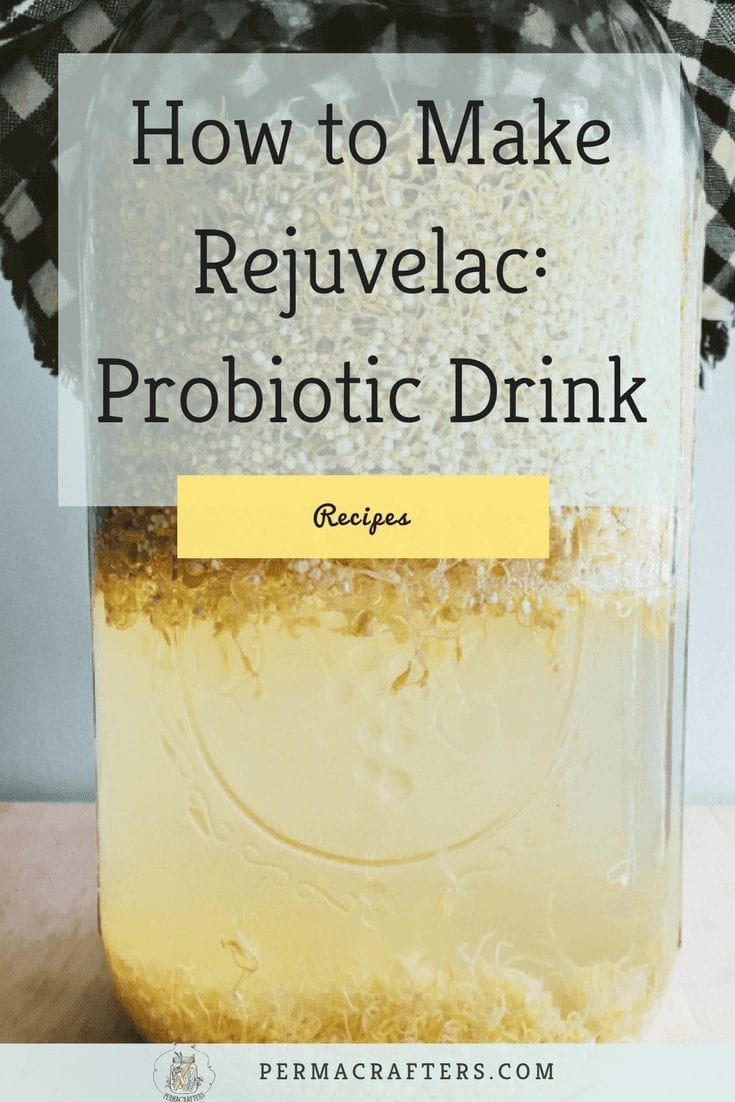
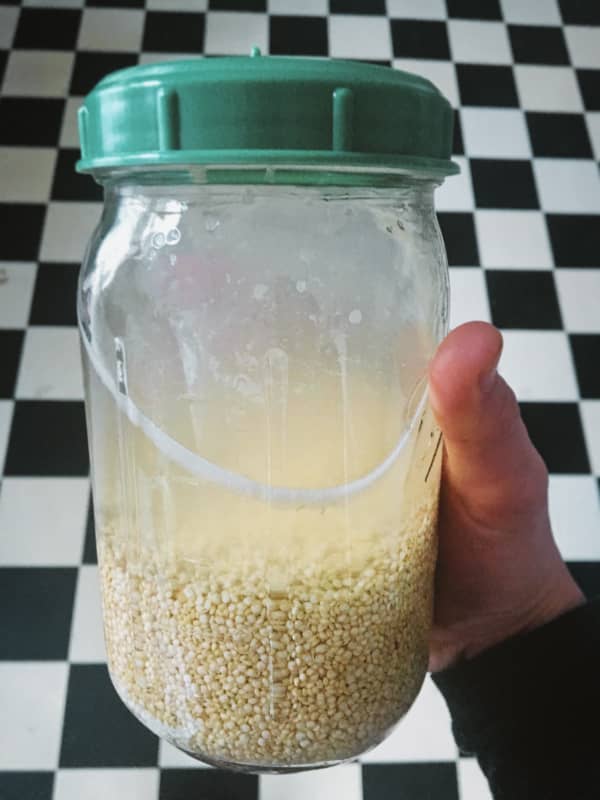
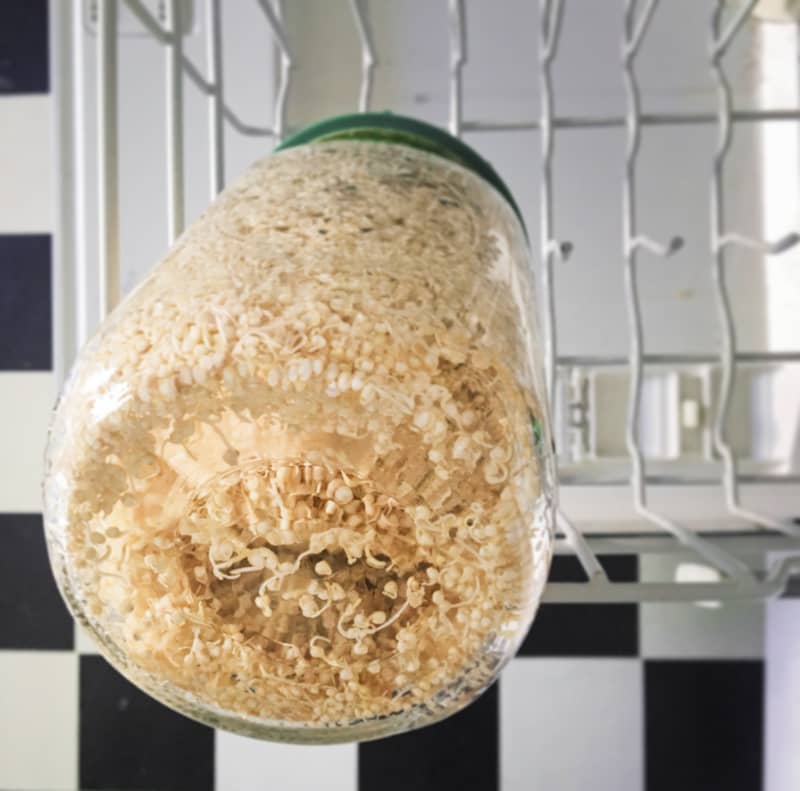
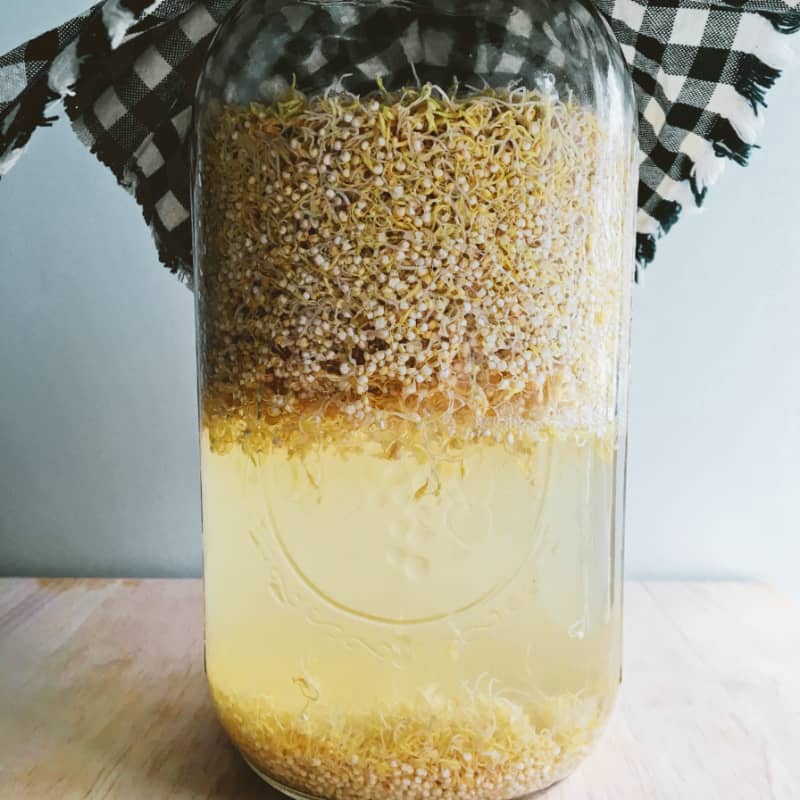
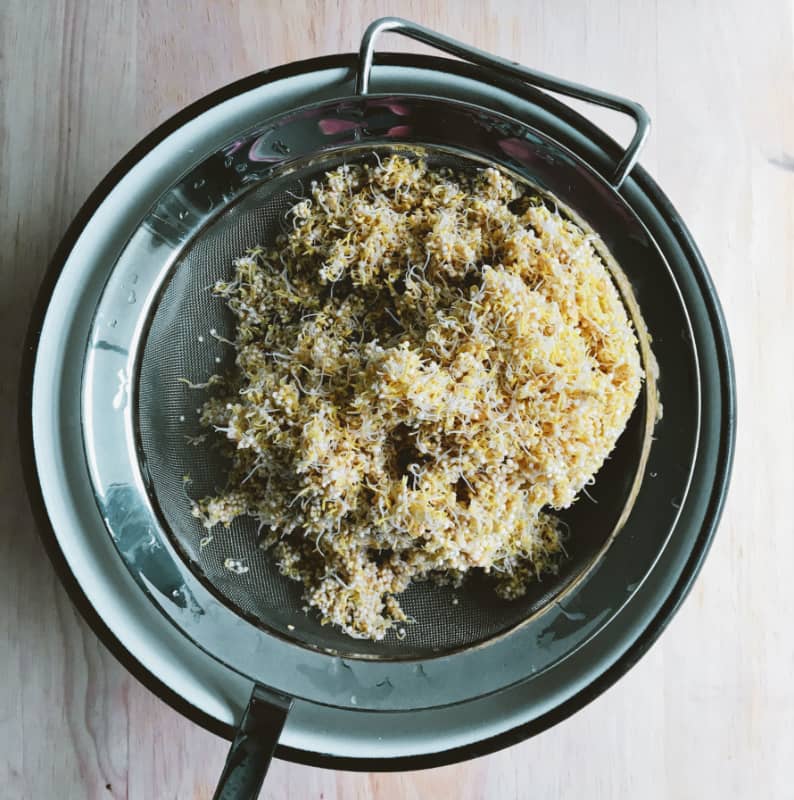
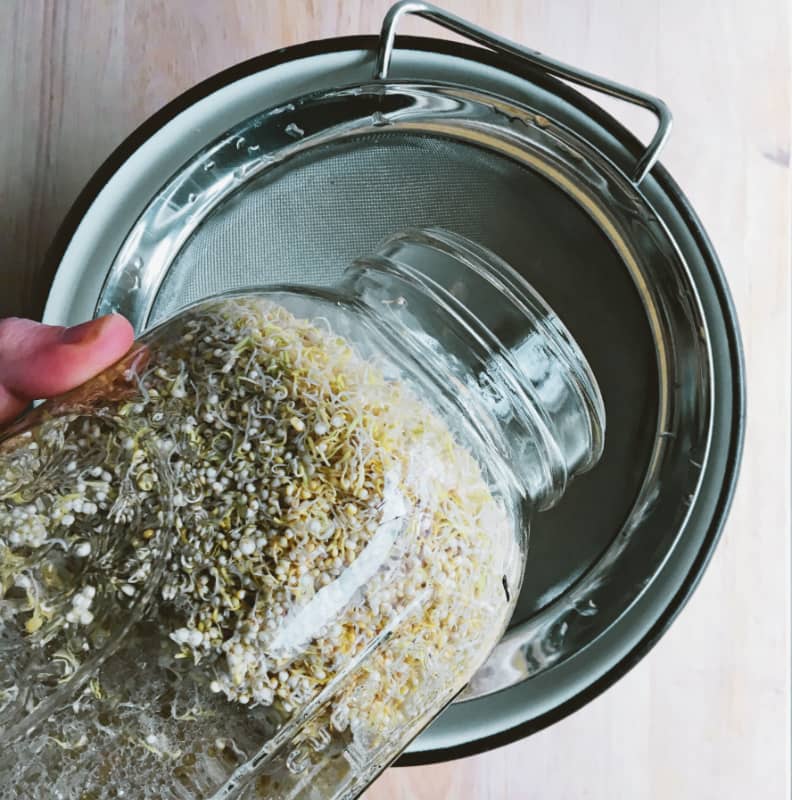
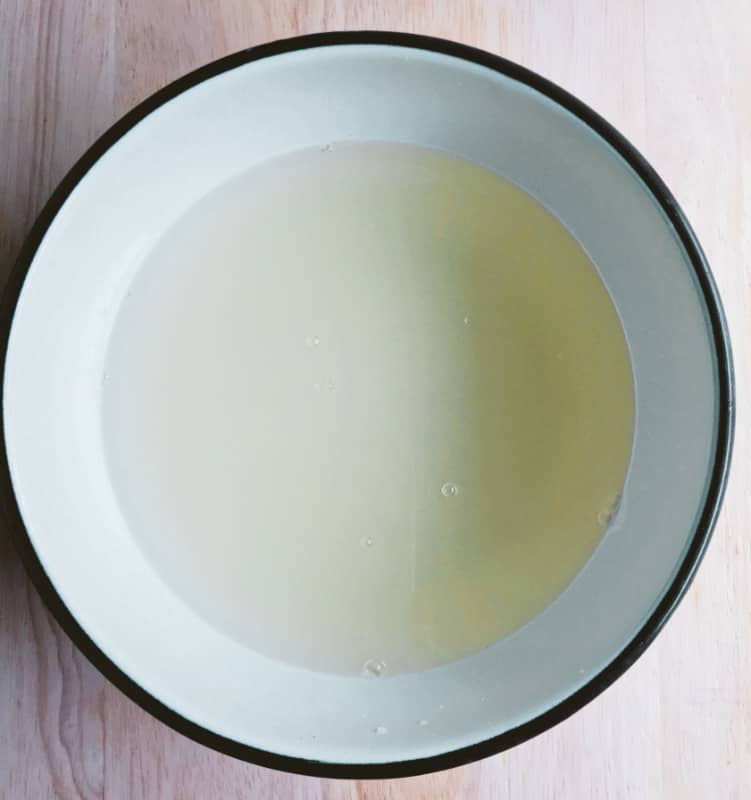
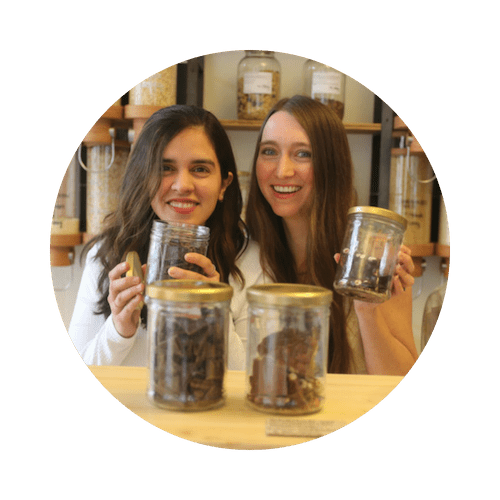


What size jar did you use for step 2? I’m using a quart and it seems too small for 1 cup of grains
Hi Joe! We used the same jar for the entire process, it was a quart-size mason jar (32 oz).
Can you cook the sprouted grains when you are done with this process?
I don’t want to waste the sprouted grains afterwards, can I use them in a recipe?